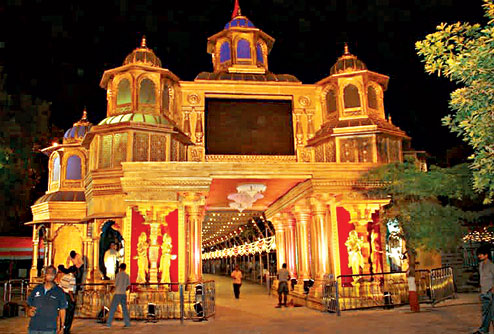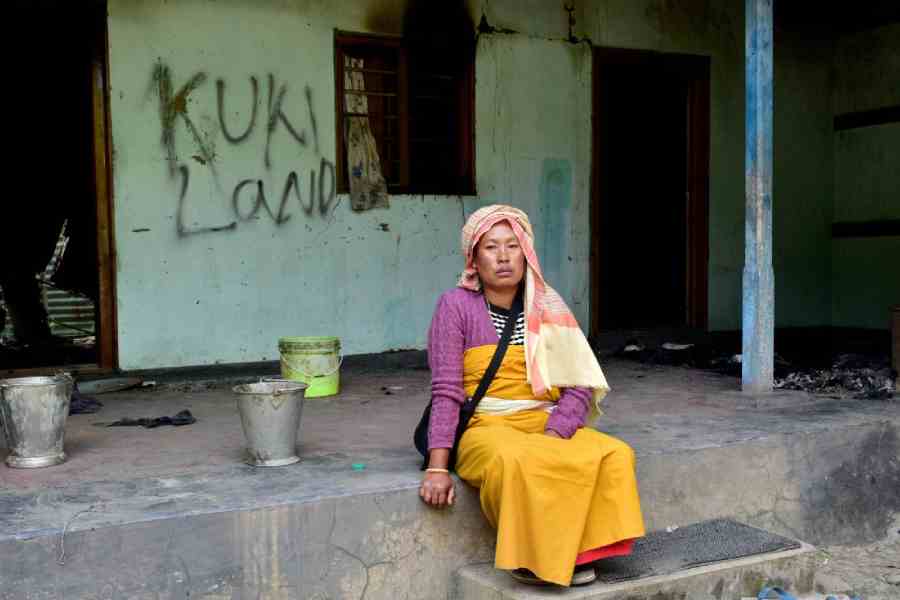
Town: Shirdi
Location: 296km or 4.5 hours by road from Mumbai
Attraction: Sai temple
Nearby tours: Nashik and Aurangabad
Details: www.daiwikhotels.com
Like all good little girls, I had perfected the art of hiding behind curtains and watching boroder cinema — grown-up movies that were forbidden fruit. One such stolen pleasure was Amar Akbar Anthony, and along with the capers of the three brothers, I remember being overawed by Sai Baba, whose statue restored Nirupa Roy’s eyesight by producing two candle flames in his own eyes and transferring them to hers.

Recently, as I was trundling along NH3, on my way from Mumbai to Shirdi, Shirdiwaale Sai Baba, the Mohd Rafi song from Amar Akbar Anthony, came back to me, eye miracle et al.
Sai Baba is said to have performed quite a few miracles in his lifetime (September 28, 1835, to October 15, 1918, according to Wikipedia). It is uncertain whether he was born a Hindu or a Muslim. He preached the oneness of God — “Sabka malik ek” — and today he is revered by Muslims and Hindus alike. As a result a throng of devotees descends on this little town in Ahmednagar district of Maharashtra all year round to visit his samadhi, a spectacular golden structure situated within a modest temple complex.
The queues to get in, however, are anything but modest. Be prepared to stand in line for four to five hours. Or enquire at your hotel about VIP passes. Please note: cellphones and cameras are not allowed inside.

The Sai complex also houses a museum, an outer building where Sai Baba would meet people, a small room where he used to stay, a garden where he would walk and a Hanuman temple.
Shirdi and its surroundings boast of many, many hotels. I was hosted by Daiwik Hotel Shirdi, a three-star property located two minutes from the Sai complex. It is owned by a Calcutta-based company that has another hotel in Rameshwaram.
“Pilgrimage tourism comprises 60-65 per cent of global travel. We noticed that there is a big gap in the Indian pilgrimage circuit between the demand for star properties and what is available, which is why we entered this sector,” explained Debashis Ghosal, the managing director and CEO of Daiwik Hotels. The group is hoping to open hotels in Dwarka and Tirupati soon.
My suite at Daiwik Hotel Shirdi was simple and comfortable, the washroom clean. The hotel runs its own brand of spa, Vyom. While the set-up is more like a basic massage room, the two ladies from Nagaland who run the spa are very efficient. And after a nearly five-hour drive from Mumbai, I was pretty thankful for their kind yet firm pummelling!
A few metres from the Sai complex is a Khandoba temple. This is where the travelling saint received his name, Sai. Legend has it that Sai Baba was driven out of Kopergaon, about 15km away, and arrived at Shirdi as part of a wedding party. When he came to the temple, the priest greeted him with, “Aao Sai.”
Once you are done with the Sai complex and Khandoba temple, there isn’t much else to see or do in Shirdi. But you could (and should) make day trips to Nashik and Aurangabad.
In Nashik, there is Panchavati, named because Sita planted five banyan trees during their exile.

Panchavati, in fact, has a Ram Kund, Kapaleshwar Temple, Sita Gumpha, Kalaram Mandir and Goraram Mandir and it might be a good idea to book an autorickshaw for about Rs 150 and visit all the spots. Nashik, of course, is so called because Lakshman cut off Surpanakha’s nose here.
About 30km from Nashik is the Trimbakeshwar temple, site of one of the 12 Jyotirlingas (Shiva temples). This is the place where the mighty Godavari begins, and where the Kumbh mela was held this year.
On the day of your Aurangabad trip, stop at a unique village called Shani Shingapur (no relation to Singapore, in case you wondered!). This village is famous for not having any doors because the local people believe Lord Shani will protect them from thieves and the punishment for theft is death. For behind-the-door activities, I learnt, they just draw
the curtains.
The stalls in front of the Shani temple reminded me of Calcutta’s Kalighat, if only in their aggressive pitch to make me part with my money. They pushed for a Rs 550 offering package, I opted for a Rs 10 bottle of oil (the most common offering at this temple). The shopkeeper said my stars were all wrong. I said I was having a wonderful year, so that couldn’t possibly be right. He frowned at my sunny smile. But I was happy to visit the Shani temple, which houses his deity, flanked by his two wives.
In Aurangabad, there is Bibi-ka-Maqbara, a Taj Mahal replica that aimed for grandeur but ended up as only a footnote in history. This mausoleum of Aurangzeb’s wife Rabia-ul Durrani was erected by her son Prince Azam Shah in her memory.
The star attraction of Aurangabad are the Ellora caves. Decorated with sculptures of Buddhist, Hindu and Jain faiths carved out of the mountain, the caves are a man-made wonder. The larger caves are impressive, but I was too scared to venture into the bat-infested, reeking and eerily dark smaller caves. I can now understand why these cavernous spaces inspired Satyajit Ray to write a murder mystery (Kailashey Kelenkari)!
Near the caves is Grishneshwar, the 12th and final Jyotirlinga temple. Male visitors have to enter the temple topless, by the way. Given how Indian men cultivate the
pot belly like a family asset, this rule does not make for a pretty sight. Sigh.
Samhita Chakraborty










